Pipes, engine, spinny things, it’s a lot to take in, and you'll likely have to spend some time processing all the info outside of your driving lessons! Understanding what’s under the bonnet isn’t just a necessity to passing the first part of your driving test, but could help out of a sticky situation after passing.
How does the engine work?
The heart of your car, the engine, turns fuel into power and energy which ultimately puts your car into motion. The process of converting fuel into power is called ‘internal combustion’; the act of small, controlled explosions generated by the spark plugs. Modern cars alert us when we have mechanical issues via lights on our dashboard. You should also get familiar with your car’s handbook which will explain when every dashboard light means. It’s also important to know what your engine sounds like so that you are able to know if something is wrong without having to rely on your dashboard lights.
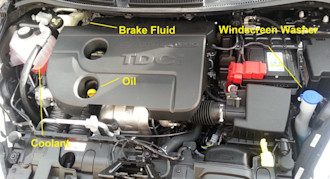
What’s engine coolant?
Car engines need cooling down whilst in motion, without engine coolant the engine’s temperature will continue to rise and will result in the metal mechanics of the engine literally melting and seizing together. Sounds awful right? it is! This result could lead to your car being written off or one hell of a mechanic’s bill to replace the engine.
Be sure to keep your engine coolant topped up correctly without getting to dangerously low levels. Engine coolant is normally bright in colour, ranging from green, pink, yellow or even blue and is a usually a good indication of the coolant reservoir tank. Coolant reservoir tanks are transparent but beware whilst removing the cap if the engine is warm, as hot steam could escape.
If your coolant levels are low, simply top up remembering the 50 X 50 rule; half coolant and half water. There are also lots of coolants which come pre-mixed, remember, do not overfill above the max line.
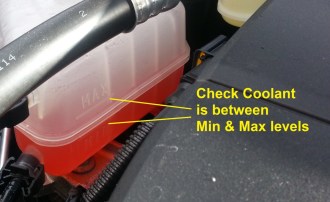
Where are the Brake Fluid and Power Steering Fluid Reservoirs?
Brake and Power steering fluids don’t need to be topped up on a regular basis but it’s important to know where to find the plastic canisters to check fluid levels if you need to. Your trusty handbook will tell you all as these two canisters are small and might be more difficult to spot.
The brake fluid reservoir is usually positioned on the driver’s side of the vehicle. Opening the reservoir incorrectly could result in brake failure if dirt gets into the cylinder. If the cylinder is left open for too long and the fluid is exposed to moist air for more than 15 minutes, the brake fluid will be ruined so be quick when topping up.
The power steering reservoir looks very similar to that of the brake, you know the fluid is low if you notice that turning your steering wheel becomes a harder task thank usual. Do not confuse the two reservoirs as it is a very costly mistake to make, the two reservoirs usually have a small but obvious description on top of the cap.
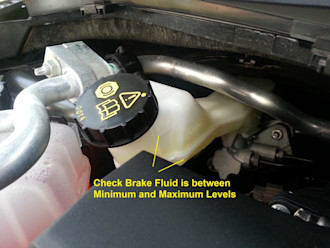
How do I check the engine oil levels?
Yes, dipstick might be a term thrown at somebody for acting silly, but YOU would certainly be the dipstick if you didn’t keep an eye on your engine oil levels! Engine oil keeps the internal parts of the engine well lubricated and sufficiently cool due to its ability to absorb heat. Without engine oil, these internal parts will grind to a painful halt and as mentioned above, will result in a deep hole in your purse or wallet or even your poor car deemed unrepairable.
Enough doom and gloom! Preventing these devastations is easy, simply grab an old rag and wipe your dipstick clean. Put the dipstick back into the oil pipe and remove once again to check the oil levels. If it’s low simply top it up with the correct oil for your car, the team at Halfords are always there to help on this.
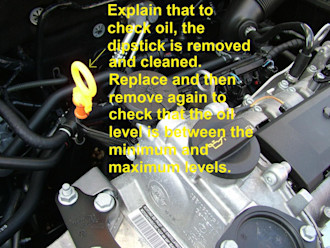
How do I top up the windscreen washer fluids?
Not only is it just plain annoying to have a dirty windscreen but it is also very dangerous if you lose visibility and cannot wash the obstruction away. Checking and topping up your windscreen fluid is very easy; the windscreen washer tank is usually located on the passenger side of the car and will usually have a blue lid. Simply top up to the max line and wash those mud and bug splats away.
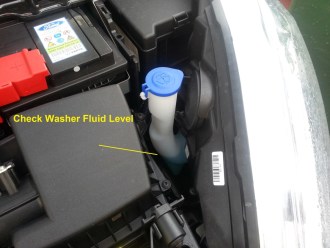
If, of course, you aren’t confident in your capabilities just yet, always consult a professional. If you do feel that a part of your car is at fault, drive down to your nearest garage and ask for advice. If you can, stay with the mechanic and ask as many questions as you need. They are normally happy to advise where they can, it’s also the best opportunity to really learn the ins and outs of your car.
Images courtesy of nicedriving.